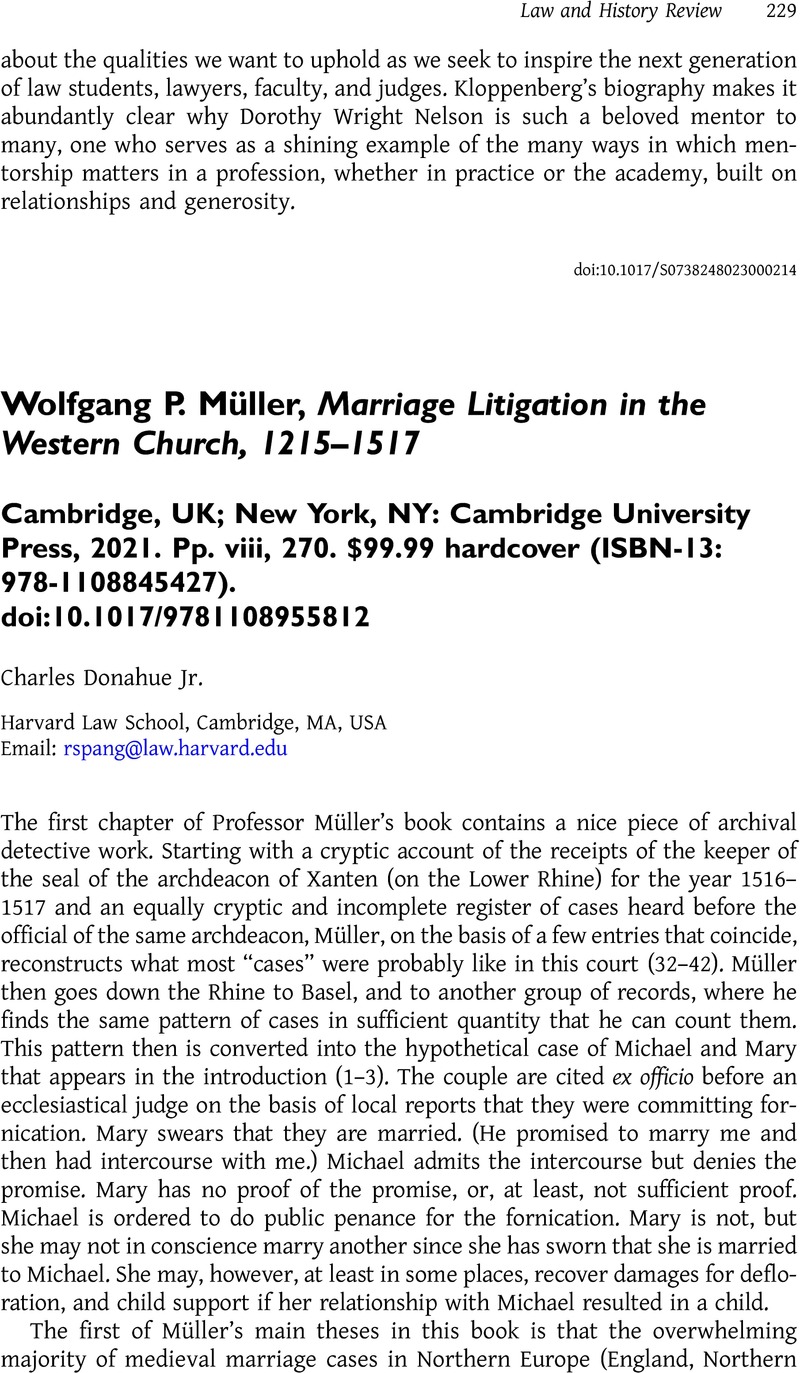No CrossRef data available.
Article contents
Wolfgang P. Müller, Marriage Litigation in the Western Church, 1215–1517 Cambridge, UK; New York, NY: Cambridge University Press, 2021. Pp. viii, 270. $99.99 hardcover (ISBN-13: 978-1108845427). doi:10.1017/9781108955812
Review products
Wolfgang P. Müller, Marriage Litigation in the Western Church, 1215–1517 Cambridge, UK; New York, NY: Cambridge University Press, 2021. Pp. viii, 270. $99.99 hardcover (ISBN-13: 978-1108845427). doi:10.1017/9781108955812
Published online by Cambridge University Press: 02 May 2023
Abstract
An abstract is not available for this content so a preview has been provided. Please use the Get access link above for information on how to access this content.

- Type
- Book Review
- Information
- Copyright
- Copyright © The Author(s), 2023. Published by Cambridge University Press on behalf of the American Society for Legal History


